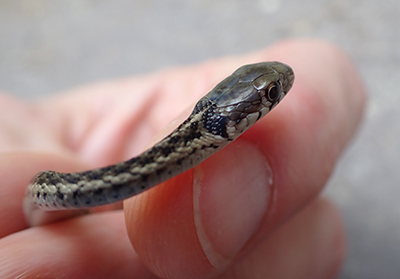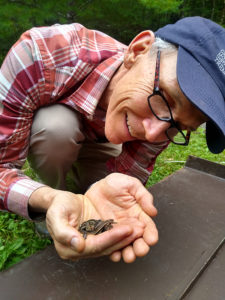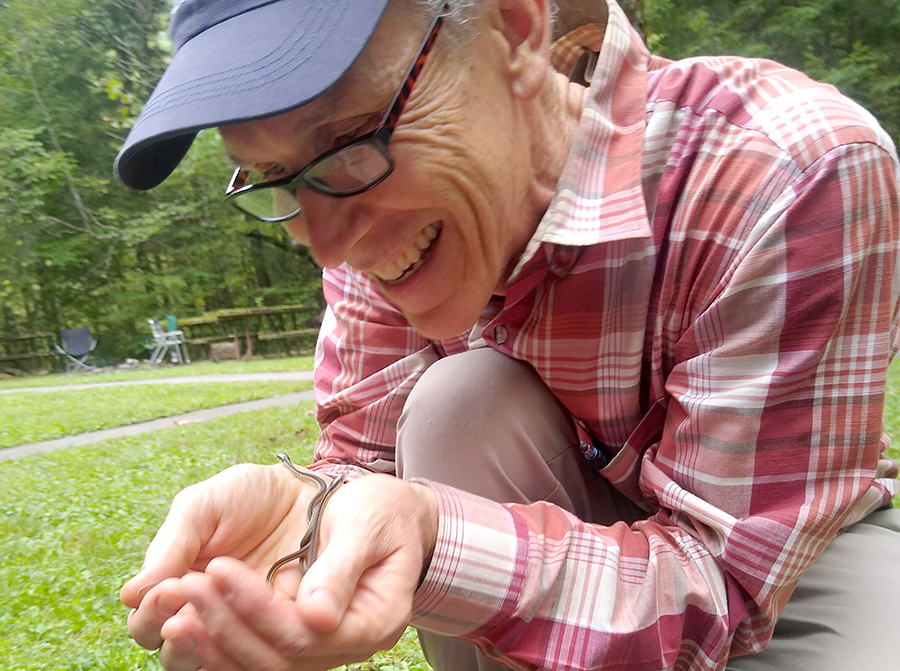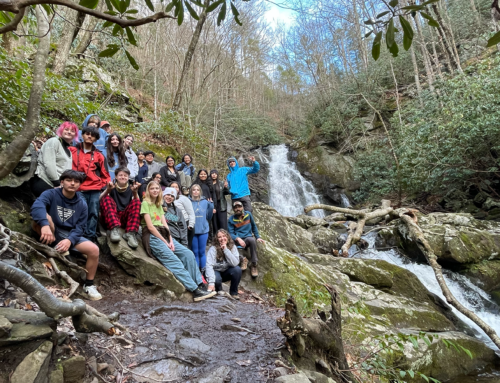Written by John DiDiego, Education Director at Tremont
When it comes to snakes, people either love them, hate them, or recognize they are beneficial but hope they never see one.

Ever since I can remember, I have been in the first category. I can remember coming across a book, The Snake Lover’s Diary by Barbara Brenner, in the library of Pinecrest Elementary as a third grader. It is the story of a young boy who decides to spend a summer making a scientific study of snakes by catching them, keeping them in tanks, and observing and documenting what they do. I wanted to be that kid!
The first snake he comes across is an eastern garter snake. The picture of the snake was so cute and I always wanted to find just such a snake, or — even better — a baby garter snake, or — even better than that — a whole pile of baby garter snakes. Well, 45 years later, my dream came true. It happened like this…

It was near the end of an afternoon Zoom conference call in my office at Great Smoky Mountains Institute at Tremont when my phone rang. One of my staff excitedly related that she had been looking for the water snakes that frequent the crawl space under her apartment hoping to show some new staff what they look like. What they found was a little clutch of baby garter snakes — did I want to come up and see?
I fairly sprinted up the road to the on-campus staff apartments and peered over the lip of the cinderblock foundation. At first, I didn’t see them. I scanned the five-by-five-foot space and suddenly saw movement… Then I saw more… Fifteen pencil-sized reptiles wriggling from corner to corner, some coiled up like strikingly patterned shock cord, some trying in vain to scale the cinderblock, some stretched out like a vague shadow. None of them longer than about 7 inches. I felt a tingle like my 8-year-old self felt when I first saw the picture in that book — so cute, so active, so big-eyed and curious.
The eastern garter snake (Thamnophis sirtalis sirtalis) is a common snake in Great Smoky Mountains National Park, but in my 12 years working at Tremont, I have only seen a small handful of them. And I have looked — believe me. Snakes are inherently fascinating, but some of the specific characteristics of garters fascinate me:
 Their name comes from their beautiful geometric patterns making them reminiscent of women’s garter belts that kept their stockings from drooping.
Their name comes from their beautiful geometric patterns making them reminiscent of women’s garter belts that kept their stockings from drooping. - Young garters are born alive. They are ovoviviparous, meaning that instead of laying eggs like most snakes, the females hold the eggs in their bodies until they are ready to hatch. Then, 12-24 young emerge from the mother’s cloaca ready to make their way in the world.
- Earthworms and amphibians make up much of their diets.
- They seem to be immune from the toxins secreted by toads — they can eat them and suffer little ill effect.
- If handled, garter snakes can emit a foul-smelling musk from the glands at the base of their tails.
I am fortunate enough to be able to teach others about snakes and other reptiles and amphibians in Tremont’s Southern Appalachian Naturalist Certification Program (SANCP). It is an amazing perk of my job that I get paid to hunt for salamanders and snakes, and then get to share them with others. Many of those who sign up for our Reptiles and Amphibians SANCP course are a little uneasy around snakes, especially at first. During those weekends, it is my hope to find a small ring-necked snake or little garter snakes like these. It is harder to be afraid of a snake this tiny.
For those of you that are fearful of snakes, may your paths not cross. For those who love them, my wish is that you too someday might be lucky enough to see some recently-birthed garter snakes… and feel that tingle!







